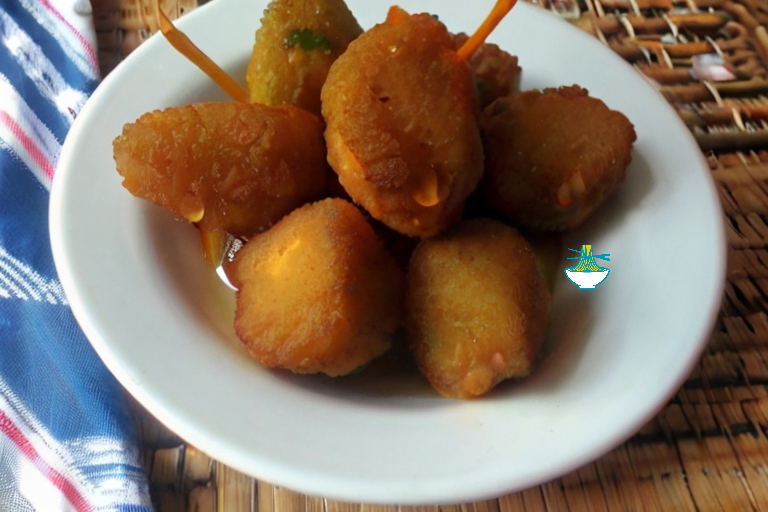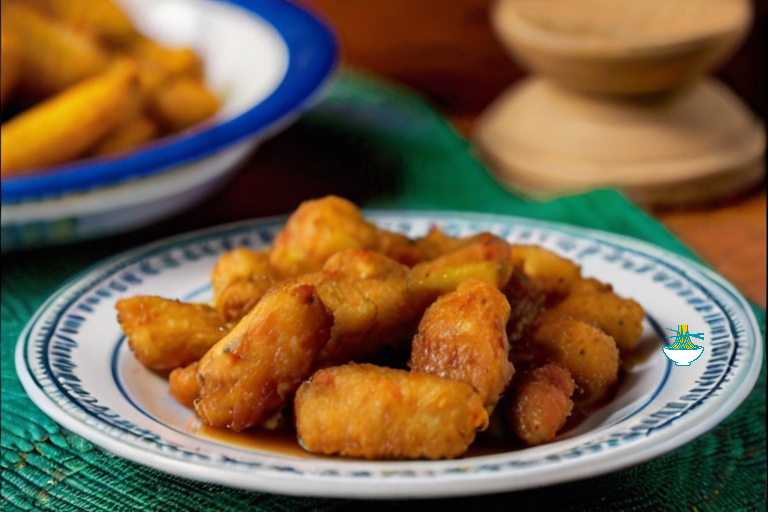Welcome to the vibrant culinary world of Cape Verde, where the fusion of African, Portuguese, and Brazilian influences creates a tapestry of delightful flavors. One dish that encapsulates the essence of Cape Verdean cuisine is Mandioca Frita, a beloved snack or side dish enjoyed across the islands. Mandioca, also known as cassava or yuca, is a starchy root vegetable that is widely used in Cape Verdean cooking for its versatility and hearty texture.
In this recipe, we'll guide you through the process of creating Mandioca Frita, crispy fried cassava that's perfect for sharing with friends and family or enjoying as a satisfying snack on its own. With its golden exterior and soft, fluffy interior, Mandioca Frita embodies the warmth and richness of Cape Verdean hospitality. So, let's embark on a culinary journey to the islands and discover the joy of Mandioca Frita!
Ingredients:
- 1 pound of fresh cassava (yuca)
- Vegetable oil for frying
- Salt, to taste

Instructions:
1- Peel the cassava: Using a sharp knife, carefully peel the tough outer skin of the cassava. Cut off both ends and discard.
2- Prepare the cassava: Cut the peeled cassava into manageable lengths, about 3-4 inches long. Then, slice each lengthwise into quarters or smaller sticks, depending on your preference. Make sure to remove any fibrous core from the center of the cassava sticks.
3- Boil the cassava: Place the cassava sticks in a large pot of salted boiling water. Cook for about 10-15 minutes or until the cassava is fork-tender but not falling apart.
4- Drain and cool: Once the cassava is cooked, drain it in a colander and let it cool slightly. This step helps to remove excess moisture from the cassava, ensuring crispiness when fried.
5- Heat the oil: In a deep frying pan or pot, heat enough vegetable oil over medium-high heat to fully submerge the cassava sticks.
6- Fry the cassava: Carefully add the cassava sticks to the hot oil in batches, making sure not to overcrowd the pan. Fry until golden brown and crispy, about 4-5 minutes per batch.
7- Drain and season: Using a slotted spoon or spider strainer, remove the fried cassava from the oil and transfer it to a plate lined with paper towels to drain any excess oil. While still hot, sprinkle with salt to taste.
8- Serve hot: Serve the Mandioca Frita immediately while still hot and crispy. You can enjoy it on its own as a snack or serve it as a side dish alongside your favorite Cape Verdean main course.
9- Enjoy! Savor the delicious flavors and crunchy texture of Cape Verde Mandioca Frita, a popular snack that's sure to delight your taste buds!
Nutritional Values:
Here are the approximate nutritional values for the ingredients used in the Cape Verde Mandioca Frita recipe:
Fresh Cassava (Yuca):
- Serving size: 1 pound (about 454 grams)
- Calories: 644
- Total Fat: 0.4g
- Saturated Fat: 0.1g
- Cholesterol: 0mg
- Sodium: 19mg
- Total Carbohydrates: 157.3g
- Dietary Fiber: 4.7g
- Sugars: 3.7g
- Protein: 2.3g
- Vitamin C: 73.5mg (123% DV)
- Calcium: 46mg (5% DV)
- Iron: 1.7mg (9% DV)
benefits:
- Provides a good source of carbohydrates for energy.
- Contains dietary fiber, which aids in digestion and helps maintain digestive health.
- Rich in vitamin C, which supports the immune system and promotes healthy skin.
- Contains small amounts of minerals such as calcium and iron, which are essential for bone health and oxygen transport in the body.
Vegetable Oil for Frying:
- Serving size: 1 tablespoon (about 14 grams)
- Calories: 120
- Total Fat: 14g
- Saturated Fat: 1g
- Polyunsaturated Fat: 4.5g
- Monounsaturated Fat: 8g
- Cholesterol: 0mg
- Sodium: 0mg
- Total Carbohydrates: 0g
- Dietary Fiber: 0g
- Sugars: 0g
- Protein: 0g
benefits:
- Acts as a source of healthy fats, including monounsaturated and polyunsaturated fats, which are important for heart health.
- Provides energy for the body.
- Helps to enhance the flavor and texture of fried foods.
Salt:
- Nutritional values for salt are negligible as it is used sparingly for seasoning. It primarily adds sodium to the dish, but the amount used can vary based on individual taste preferences.
benefits:
- Enhances the flavor of dishes by providing a savory taste.
- Plays a role in regulating fluid balance in the body.
- Contains sodium, which is necessary for nerve function and muscle contraction. However, it should be consumed in moderation to maintain optimal health.
Please note that these values are approximate and may vary based on factors such as brand, specific type of ingredient, and cooking methods. Additionally, the nutritional values provided are based on standard USDA data and may not account for variations in nutrient content due to factors like cooking time and temperature.


Comments